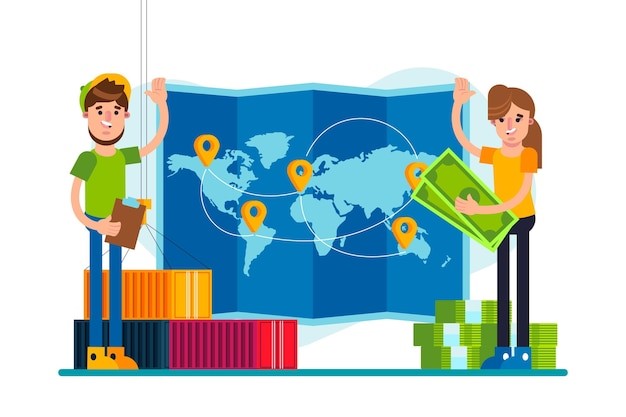


The COVID-19 pandemic has profoundly impacted global trade, compelling governments and businesses to adapt to new customs clearance procedures. Let us explore the changes in export customs clearance in Mumbai, India, highlighting the measures implemented in response to the pandemic.
Enhanced Documentation and Digitalization:
To mitigate physical contact and minimize the risk of virus transmission, export customs clearance in Mumbai has undergone significant changes. One notable transformation is the emphasis on enhanced documentation and digitalization. Exporters are now required to submit all necessary paperwork digitally, reducing the need for physical handling. This shift has facilitated smoother processing and accelerated the overall clearance process.
Introduction of Contactless Inspections:
COVID-19 has forced authorities to reevaluate traditional inspection methods. In Mumbai, customs officials have implemented contactless inspection protocols to ensure safety without compromising efficiency. Technologies such as X-ray scanners and thermal imaging cameras are now utilized to carry out inspections while minimizing physical contact. These measures have expedited the clearance process by reducing bottlenecks caused by physical inspections.
Remote Collaboration and Communication:
Mumbai's customs authorities have adopted remote collaboration and communication tools to streamline export clearance procedures. Exporters can now engage with customs officials virtually to resolve any queries or address concerns. Digital platforms, video conferencing, and online document submission portals have become instrumental in maintaining efficient communication channels. This transition has not only enabled social distancing but also fostered a more accessible and transparent clearance process.
Stringent Health and Safety Measures:
Amidst the pandemic, the health and safety of customs officials and exporters were of paramount importance. Mumbai's customs clearance procedures now adhere to stringent health protocols, including mandatory temperature checks and sanitization measures. Regular training and awareness programs have been conducted to educate personnel about best practices, ensuring a safe and secure working environment. These measures instill confidence in exporters and promote compliance with safety guidelines.
Conclusion:
The COVID-19 pandemic has necessitated significant changes in the pre-existing procedures of export customs clearance in Mumbai. Through enhanced documentation, contactless inspections, remote collaboration, and stringent health measures, the customs authorities have successfully adapted to the new normal. These changes have not only ensured the safety of personnel but also facilitated efficient and streamlined trade operations.
Navigating the intricacies of import customs clearance in Mumbai is essential for businesses engag.....
The bustling metropolis of Mumbai, where the air is thick with the aroma of chai and the streets are alive with the hum of commerce. In the heart of this vibrant city lies a crucial hub for interna.....
In today's rapidly evolving marketplace, the logistics sector plays a pivotal role in meeting the dynamic expectations of consumers for transparency, timely delivery, and innovation. As India&#.....